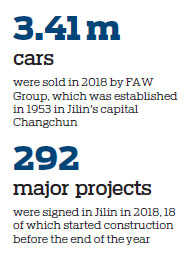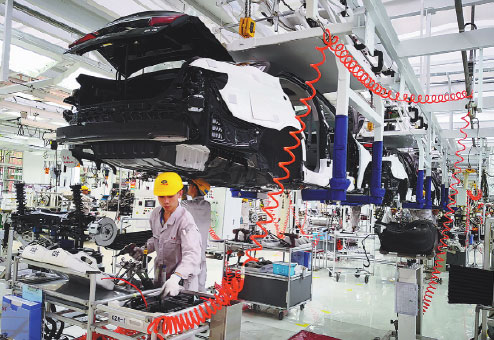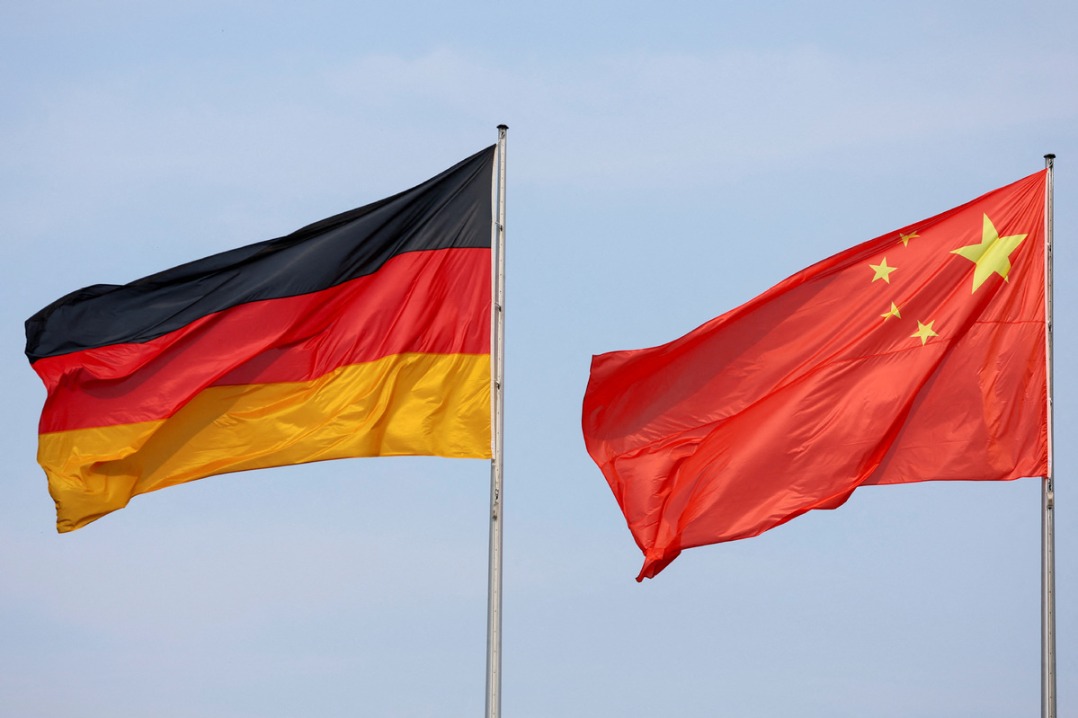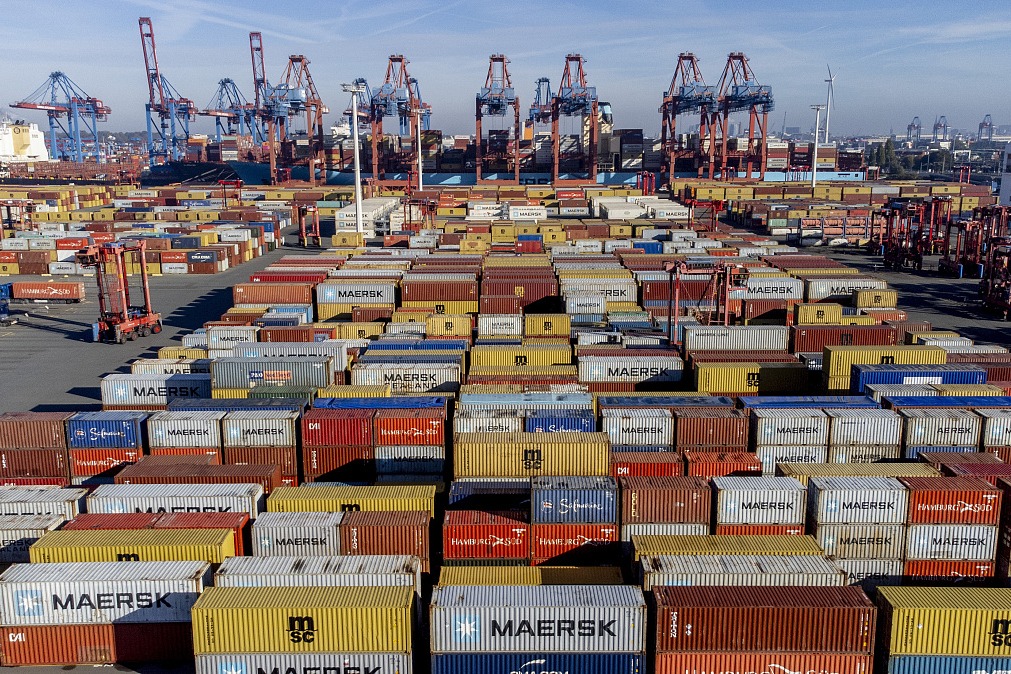Province industries go from smokestacks to high-tech

Output of strategic emerging industries growing 6 percent annually since 2015
In Northeast China's Jilin province, innovation has never been treated as an empty slogan, but an effective campaign that has helped fuel the local economic development and power the transformation and upgrading of the old industrial base.

Since 2015, output value of strategic emerging industries in Jilin has witnessed an annual average growth rate of 6 percent, playing a leading role in converting old economic growth drivers into new ones. Representative achievements in the sector include Jilin-1 satellite family, China's first self-developed commercial remote sensing satellite constellation featuring high time, high space and high spectral resolution.
Developed by Chang Guang Satellite Technology, these satellites can be widely used in hot spot tracking, emergency response, national territory survey, land mapping and intelligent industries. They also proved that Jilin has been at the nation's forefront of research and development in fields of high technology, telecommunication, equipment manufacturing and aerospace information.
As for revitalizing the traditional industries, the province has planned to form new economic growth points via promoting digital economy. Focus has been put on the better integration of manufacturing with the internet, big data and artificial intelligence, as well as a fusion of digital economy with six traditional sectors - automobiles, petrochemicals, food, medicine, metallurgy and equipment manufacturing - in a bid to pursue higher value-added products.
In the automobile sector, for example, China's leading automaker FAW Group, which was established in 1953 in the provincial capital Changchun, sold 3.41 million cars in 2018, with several new energy and smart models joining in its product profile. The group's premium brand Hongqi, the country's first and oldest luxury marque, sold 33,000 cars last year, marking a 600 percent rise year-on-year.
Jilin Universal Machinery, a leading Chinese auto parts provider, kept its production lines bustling during the week-long Spring Festival holiday in early February. "We have to squeeze time for production, because we have got orders for the next five years," said Li Jibao, chairman of the company.
Jilin Universal Machinery used to compete for market share with low-cost products, now the situation has changed, Li noted. Due to the innovative products characterized by core competitiveness, the company generated 2.93 billion yuan ($437.12 million) in sales in 2018, an increase of 30 percent year-on-year.
Petrochemical companies have also realized more profits through innovative technologies. Jilin Petrochemical, a branch of China National Petroleum Corp, set a new high in profits in 2017 over its nearly 70-year development by earning more than 5 billion yuan and maintained strong growth momentum last year. "We have continuously optimized the product structure and taken making one of China's best acrylonitrile-butadiene-styrene resins as our goal," said Sun Shuzhen, general manager of the company.
In addition to promoting innovation, the Jilin provincial government has attached more importance to improving business environment by streamlining administrative approval procedures and issuing preferential tax and financing policies.
In 2018, Jilin hosted more than 100 provincial-level investment attraction activities such as the third World Jilin Entrepreneurs Convention and State-owned Companies Powering the Revitalization of Northeast China. It also saw the signing of 292 major projects, 18 of which started construction before the end of the year.
This year, eight provincial government departments including the Development and Reform Commission and Department of Finance issued 100 policies on deepening opening-up during the province's two session meetings in January, which cover nine sectors and aim at facilitating trade and investment, training and attracting talented personnel and relaxing control over market entry.
Moreover, Jilin in recent years has carried out a large number of ecological protection projects to restore its unique advantages in natural resources endowed with beautiful landscapes such as the Changbai Mountain and Jingyuetan National Forest Park. They include the protection of the province's iconic black soil in the central area and the launch of a river connection project in the western area to tackle the longstanding drought problem.
The province also continues to intensify efforts in protecting two endangered species - wild Siberian tiger and Amur leopard. Siberian tigers are one of the world's most endangered species, while Amur leopards, also known as the Far Eastern leopard, have been listed as critically endangered by the International Union for Conservation of Nature.
In 2017, the management bureau of Northeast China Tiger and Leopard National Park was established in Changchun.
The park, which is China's first national park under the direct management of the central government, covers two Chinese provinces and borders Russia and the Democratic People's Republic of Korea, with a total area of more than 1.46 million hectares. It aims to create a stable habitat for these two kinds of rare animals, according to the management bureau.
So far, at least 27 wild Siberian tigers and 42 Amur leopards have been reported to roam in Jilin.

Beautiful Countryside In Jilin.Photos Provided To China Daily

A view of Chagan Lake which is known for traditional winter fishing.Photos Provided To China Daily

Technicians at Chang Guang Satellite Technology carry out a satellite test.

Workers assemble vehicles in a Hongqi plant.
MOST POPULAR
- 1 Things to know about China Intl Consumer Products Expo 2024
- 2 China tops FDI confidence index of emerging markets
- 3 China specifies steps to improve payment services in tourist attractions
- 4 Low-altitude economy set to take off
- 5 China's immigration service platform receives over 10m calls from home, abroad
Editors' Picks
 Infographic:
A look at China's economy in Q1 of 2024
Infographic:
A look at China's economy in Q1 of 2024
 Infographic:
China to remove foreign ownership restrictions in value-added telecom services in pilot areas
Infographic:
China to remove foreign ownership restrictions in value-added telecom services in pilot areas
 Infographic:
2023 Sino-German investment and trade in numbers
Infographic:
2023 Sino-German investment and trade in numbers
 Infographic:
China-Germany relations in graphic
Infographic:
China-Germany relations in graphic



